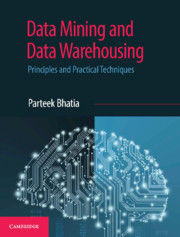Introduction to Clustering Large and High-Dimensional Data
There is a growing need for a more automated system of partitioning data sets into groups, or clusters. For example, digital libraries and the World Wide Web continue to grow exponentially, the ability to find useful information increasingly depends on the indexing infrastructure or search engine. Clustering techniques can be used to discover natural groups in data sets and to identify abstract structures that might reside there, without having any background knowledge of the characteristics of the data. Clustering has been used in a variety of areas, including computer vision, VLSI design, data mining, bio-informatics (gene expression analysis), and information retrieval, to name just a few. This book focuses on a few of the most important clustering algorithms, providing a detailed account of these major models in an information retrieval context. The beginning chapters introduce the classic algorithms in detail, while the later chapters describe clustering through divergences and show recent research for more advanced audiences.
- Rather than providing comprehensive coverage of the area, the book focuses on a few important clustering algorithms
- A detailed and elementary description of the algorithms is provided in the beginning chapters, to be easily absorbed by undergraduates
- Recent research results involving sophisticated mathematics are of interest for graduate students and research experts
Product details
November 2006Paperback
9780521617932
222 pages
229 × 153 × 15 mm
0.307kg
Temporarily unavailable - available from TBC
Table of Contents
- 1. Introduction and motivation
- 2. Quadratic k-means algorithm
- 3. BIRCH
- 4. Spherical k-means algorithm
- 5. Linear algebra techniques
- 6. Information-theoretic clustering
- 7. Clustering with optimization techniques
- 8. k-means clustering with divergence
- 9. Assessment of clustering results
- 10. Appendix: Optimization and Linear Algebra Background
- 11. Solutions to selected problems.




